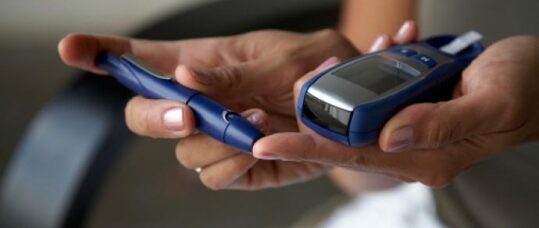Type 1 or Type 2. How much does a correct diagnosis matter?

How many times in practice do we diagnose someone as having type 2 diabetes and then perhaps a few months later or even a couple of years later have to amend our diagnosis and conclude that they may in fact have type 1 diabetes?
Recently, a man in his early 50s who had been diagnosed a few years ago as having type 2 diabetes showed some significant changes which suggested he was not being treated appropriately. At this time, he was taking maximum dose metformin, he had lost some weight, having had a BMI around 28 and his Hba1c was around 63 mmol/mol. At that time, he was struggling to maintain his hba1c even at that level, then over 6-8 weeks, his hba1c increased to 113mmol/mol.
Related Article: Be alert to pancreatitis in patients using GLP-1 weight-loss drugs
The GPs he saw started him on Gliclazide 80mg, but even dose increases made no difference.
I then saw him and recognised that he needed to commence insulin therapy, and suggested that his GAD antibodies could be checked, to help clarify whether he was in fact more likely to have type 1 or type 2 diabetes. Within 3months his hba1c had dropped back to 69mmol/mol with just 16units of a daily basal insulin. The results of his GAD antibodies were >2000, clearly identifying that his problem was lack of insulin secretion.
He has now been commenced on a basal bolus regime, with support from a diabetes dietitian on learning to count carbohydrates.
Around this time, I attended a one-day meeting where this type of anomaly was addressed in one of the sessions. It was suggested that as diabetes clinicians we should be open to re-examining an initial diagnosis. Just because someone is overweight/obese does not automatically mean they have type 2 diabetes, we need to be more vigilant as to how they respond to 1st line and subsequent treatments. Similarly, a slimmer person does not automatically fit the type 1 profile; we need to be prepared to admit that maybe their initial diagnosis may not be the correct or longer term one.
Related Article: Low-energy diet improved eating disorder symptoms in patients with type 2 diabetes
I was directed to a recent paper in diabetes medicine journal, which discusses the need for a new system to clarify the differing types of diabetes that are now being seen. It is worth a look, so here’s the link: https://www.ncbi.nlm.nih.gov/pubmed/26798148
It is so easy to diagnose someone in their mid-forties or older as automatically having type 2 diabetes, just because they are older and we don’t allow ourselves to consider the possibility that they may have type 1. Perhaps we should be a little more cautious, and tell them, “we think that you have type 2, but we will review this as time goes on”. If then their blood sugars/hba1c at any point dramatically increase without any other predisposing factors, we can then consider the possibility that what they have is more like type 1 diabetes and may fit the picture of those currently referred to as LADA or Latent Auto Immune Diabetes in Adults.
Related Article: Wales diabetes prevention programme cuts risk of developing type 2 diabetes by nearly a quarter
On the other hand, just because someone does not have the high levels of GAD antibodies when tested, may not mean that they are not a type 1 picture. They may just be developing losing their beta cell function at a slower rate
It is all about keeping our minds open and not being dogmatic about the type of diabetes at time of diagnosis. The picture is not quite as black and white as we might once have thought.

See how our symptom tool can help you make better sense of patient presentations
Click here to search a symptom


How many times do we diagnose someone with type 2 diabetes and then later conclude that they may in fact have type 1?



